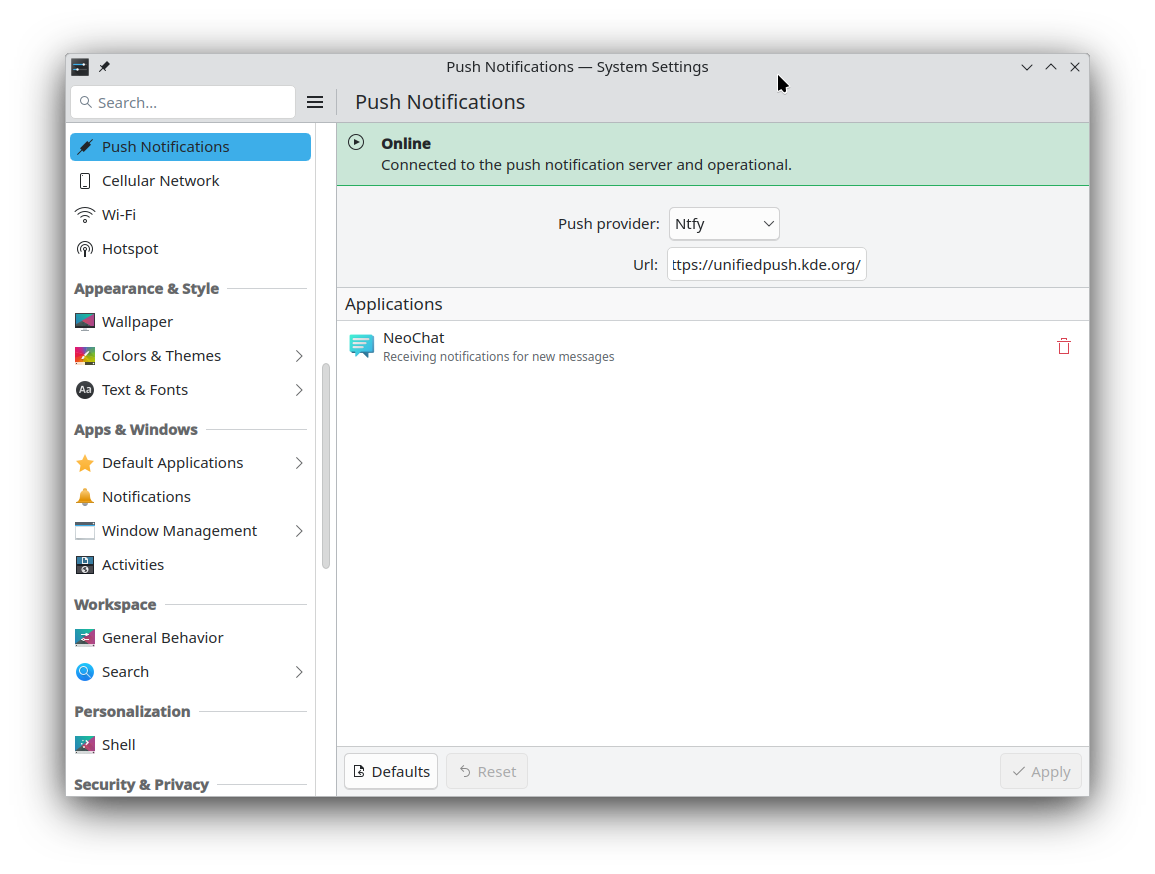this post was submitted on 19 Oct 2024
110 points (100.0% liked)
KDE
5375 readers
21 users here now
KDE is an international technology team creating user-friendly free and open source software for desktop and portable computing. KDE’s software runs on GNU/Linux, BSD and other operating systems, including Windows.
Plasma 6 Bugs
If you encounter a bug, proceed to https://bugs.kde.org, check whether it has been reported.
If it hasn't, report it yourself.
PLEASE THINK CAREFULLY BEFORE POSTING HERE.
Developers do not look for reports on social media, so they will not see it and all it does is clutter up the feed.
founded 1 year ago
MODERATORS
you are viewing a single comment's thread
view the rest of the comments
view the rest of the comments

@kde@floss.social @kde@lemmy.kde.social I'm sorry to see you've gone the "14 + 1 standards" XKCD way. Is there any reason why?
It turns out, in this case it isn't. This is about a KDE library (service?) that uses Unified Push, which is a standard implemented by servers like ntfy, Nextpush, and Gotify. If you use any f-droid apps, you're probably already using Unified Push. Home Assistant uses it for mobile notifications, too.
It is, probably, the third biggest notification protocol after Google's and Apple's, only it doesn't route through their servers or provide them with more of your data to harvest and sell.
Unified Push is a good thing. It looks like KDE just makes it accessible to KDE application developers through the KDE libraries.
Home assistant uses it for notifications now? I've got the f droid version but don't see that.
I meant the server can deliver notifications via ntfy:
https://docs.ntfy.sh/examples/#home-assistant
Yeah, I don't think the mobile app communicates with the server over anything but the web API.
Oh OK. Yes I've had this going for a while. If Anyone wants some configs I'll paste them.
@sxan I have never used f-droid, as I do not use Android.
Regardless, all banks and fintechs in my country will disable your account you if they detect sideloading apps like it.
ntfy is in the app store, so you don't have you side load it. I don't know how many iOS apps use ntfy, but many Android OSS apps will ask you over which notification system you want to work.
I was just clarifying that this isn't one of the XKCD proliferation cases. Apple and Google's push notifications are proprietary and give them full access to your notifications. Unified Push is the OSS alternative, and this KDE enhancement doesn't createa another one: it uses the defacto standard OSS push notification specification.
The fact that ntfy is in the Apple app store makes me suspect there must be some number of iOS apps that can be configured to use Unified Push.
If you bothered to read the linked article and Volker's blog post (linked from the article), which you obviously haven't, you would see how this is not the case.
@Bro666 I came to post this Just after reading Mr Krause's post and the background of UnifiedPush. My gripe is because there are already existing frameworks like w3c's Web Push (which is not addressed in UnifiedPush, as far as I could see) and the native push frameworks of each mobile OS (which are disqualified on privacy reasons). Hence why I said "14 push frameworks", because KDE is aiming to serve both desktop and mobile with a new standard, inducing even more fragmentation.
KDE is not introducing a new notification framework. It is using something that already exists, so still barking up the wrong tree.
@crystalmoon @kde@floss.social @kde@lemmy.kde.social what exactly are the fourteen other push notification frameworks for desktop Linux? I’ve literally never seen one before
@crystalmoon @kde@floss.social @kde@lemmy.kde.social UnifiedPush is the only relevant standard being actively adopted by free software. You need an ecosystem around a push standard for a client and server setup to be useful/practical, and nothing comes close to UnifiedPush. We'll never get rid of the 14+1 problem if we don't focus efforts on a particular open standard, and this IS the one by all means.